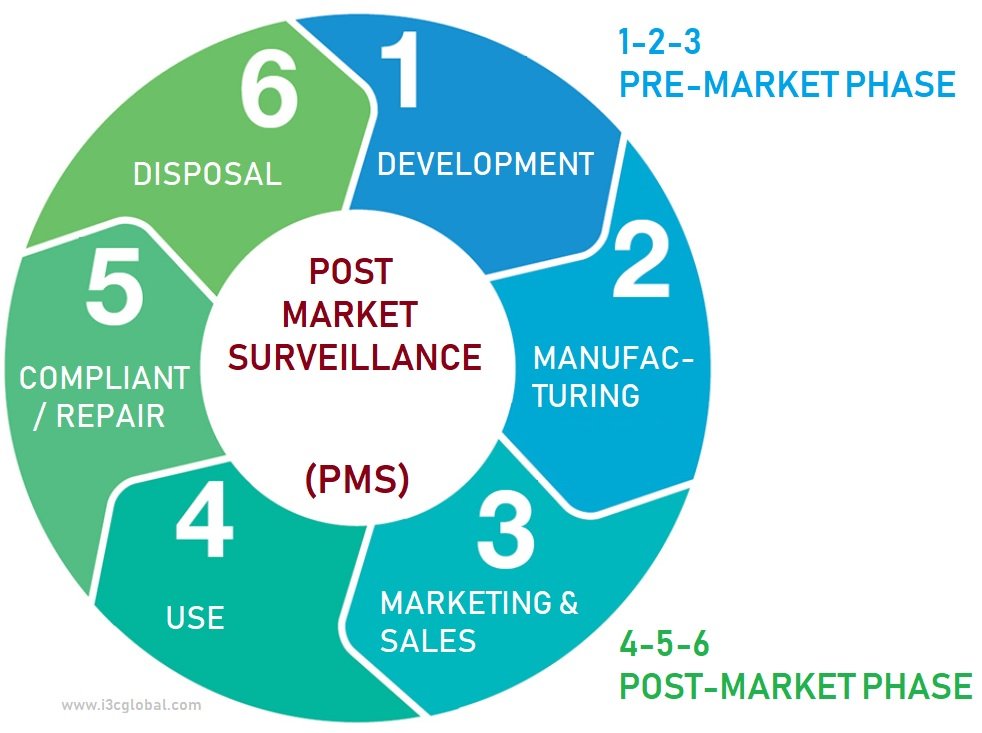Quick Contact

Post Market Surveillance Plan
Post Market Surveillance Plan is a systematic plan of the processes and the activities to continuously monitor the safety and the performance of the medical devices released in the market. It contains a clear strategy to be followed to collect the data which is directly proportional to the risk associated with the intended use of the medical device.
PMS Plan Requirements
The PMS Plan sets out the requirements for conducting the post market surveillance activities. It is required for all devices except custom-made devices. It should be part of the technical documentation. The PMS plan should address the collection and utilization of available information, in particular:
- Information regarding serious incidents, including information from PSURs, and field safety corrective actions;
- Records mentioning non-serious incidents and data on any undesirable side-effects;
- Information from trend reporting;
- Relevant specialist or technical literature, databases and/or registers;
- Particulars including feedbacks and complaints, provided by users, distributors and importers; and
- Publicly available details about similar medical devices.
Our experts developed PMS Plan template, and SOP, in line with EN ISO 13485:2016, Section 8.2.1 and MEDDEV NB-MED/2.12/Rec.1 guideline. During the preparation of the MDR Technical Documentation File, the clinical evaluation report should be concluded with the help of appropriate Post Market Surveillance Procedure, relevant SOPs, PMS plan template and a report with its conclusion.
How to write a PMS Plan effectively
Writing a PMS plan requires careful consideration of the medical device features, state of the art, its market, and potential risks associated with its use of the device in patients or users.
Here are a few tips to help you write a PMS Plan
- A proactive and systematic process to collect information
- Effective and appropriate methods to assess the collected data
- Suitable measures and threshold values shall be used in the continuous re-evaluation of the benefit-risk analysis and of the risk management
- Effective and appropriate methods and tools to examine complaints and analyze market-related experience collected in the field
- Methods and protocols to direct the events subject to the trend report
- Methods and protocols to interact effectively with competent authorities, notified bodies, economic operators and users
- Reference to procedures to fulfil the manufacturers’ obligations for the PMS system, Post Market Surveillance Plan, and Periodic Safety Update Report
- Systematic procedures to identify and begin appropriate measures including corrective actions;
- Effective tools to detect and identify devices for which corrective actions might be necessary;
Remember that your post-market surveillance plan should be made to the specific device features and also with relevant MDR Annex III requirements. The plan must be signed off with the involvement of all relevant stakeholders in the development, implementation and marketing of the device to ensure its effectiveness.
As a leading global medical device regulatory services provider, the I3CGLOBAL team is always ready with the resources to support your organization in EU MDR regulations covering PMS, PMCF, and PSUR Reporting through Clinical Documentation.
Frequently Asked Questions
What the major data collection methods?
- Written or electronic surveys or questionnaires
- Interviews of users
- Literature search
- Use of medical device registries
- Post-market clinical follow-up studies
- Recall information and other information released from regulatory agencies
- Review of complaints (including incident reports)
- Review of non-solicited observations by healthcare professionals or observations by the organization’s sales and marketing team members
- Review of service reports or maintenance reports
- Review of regulatory compliance notifications
